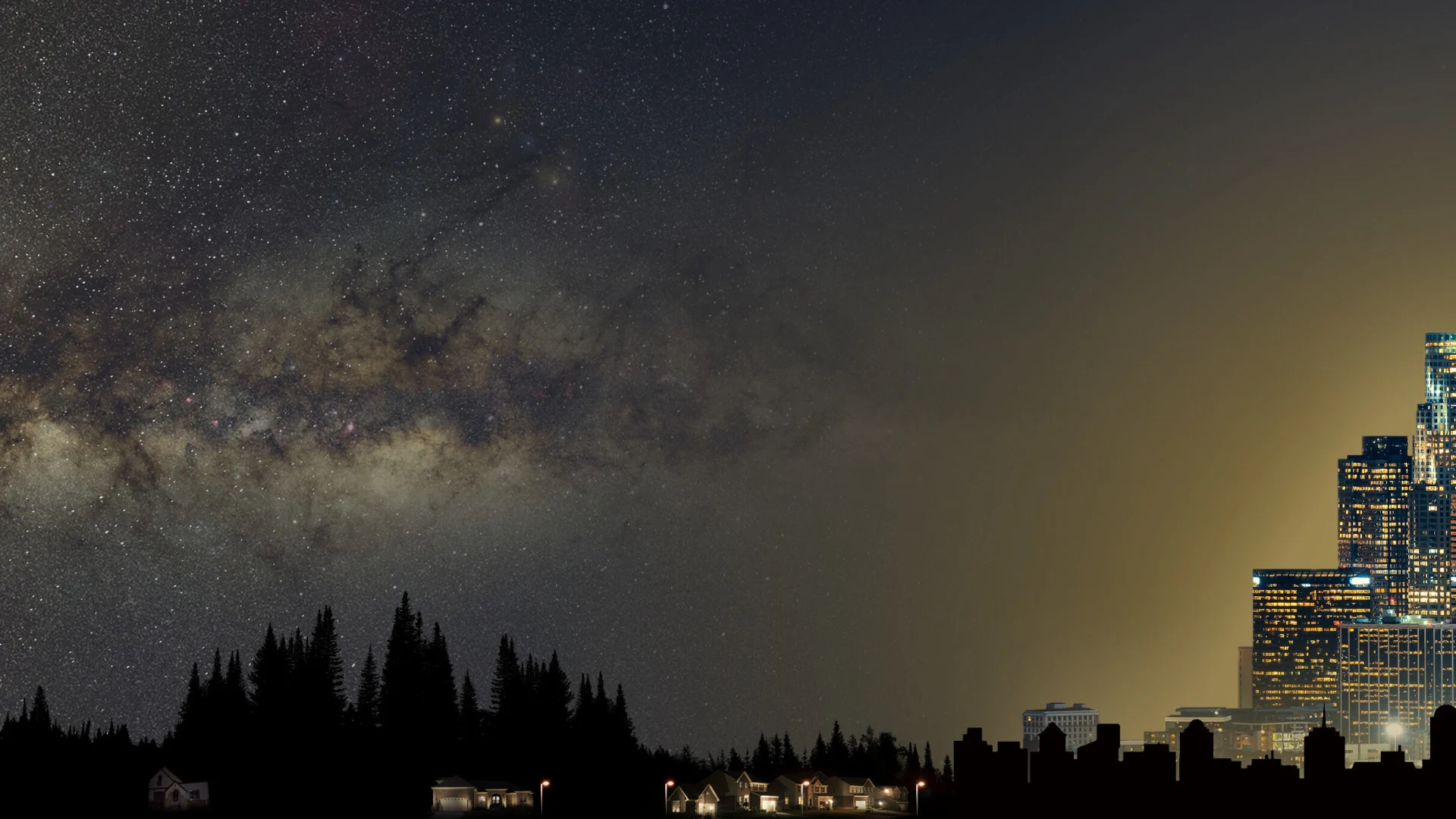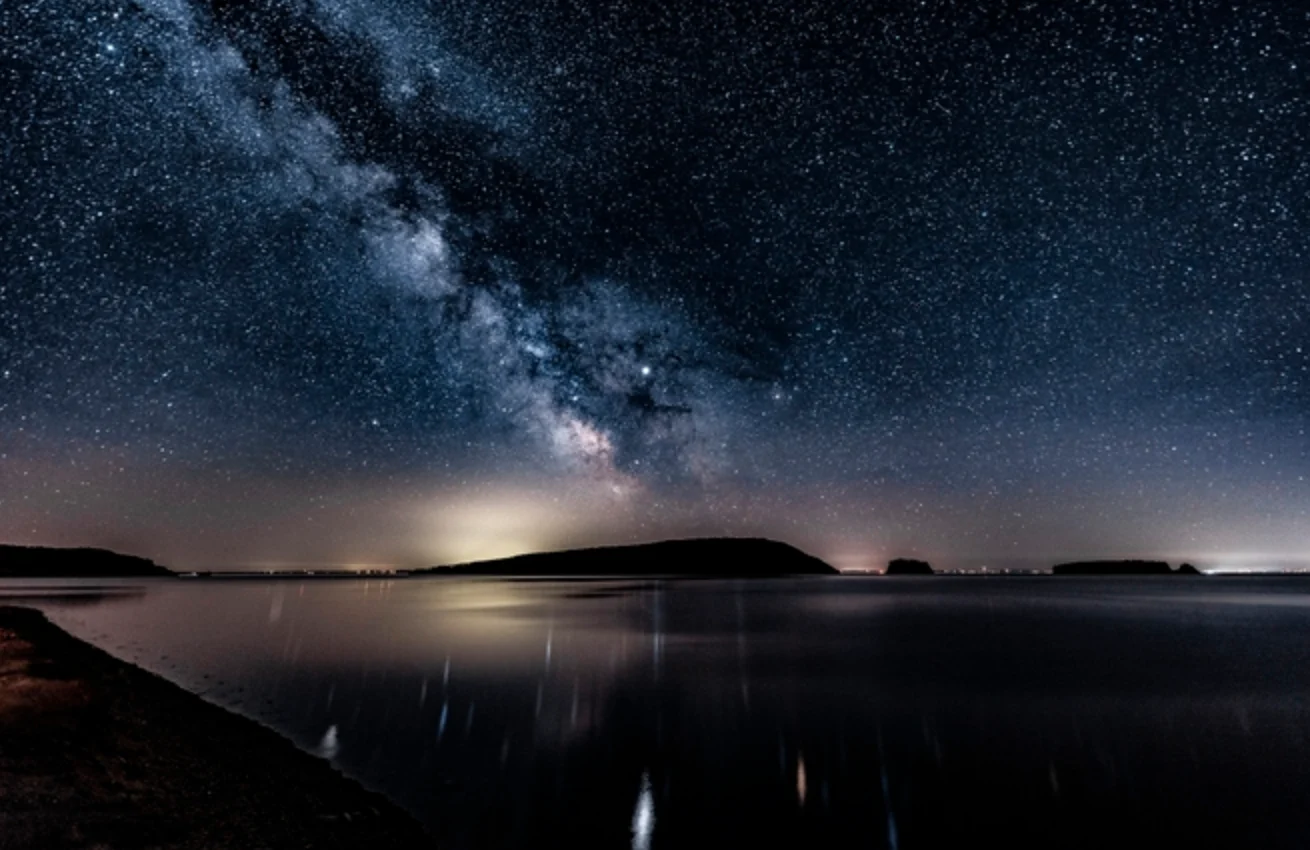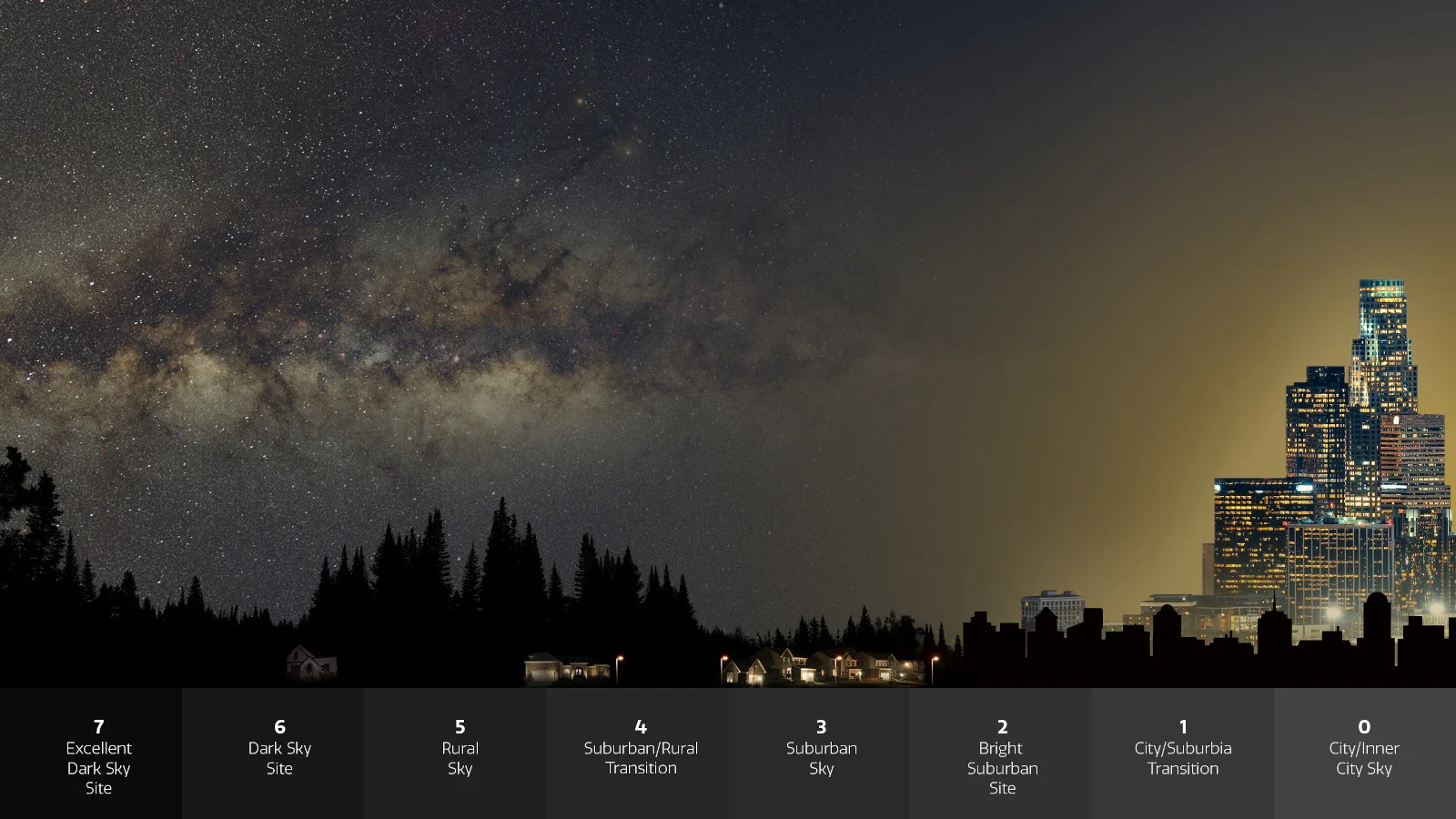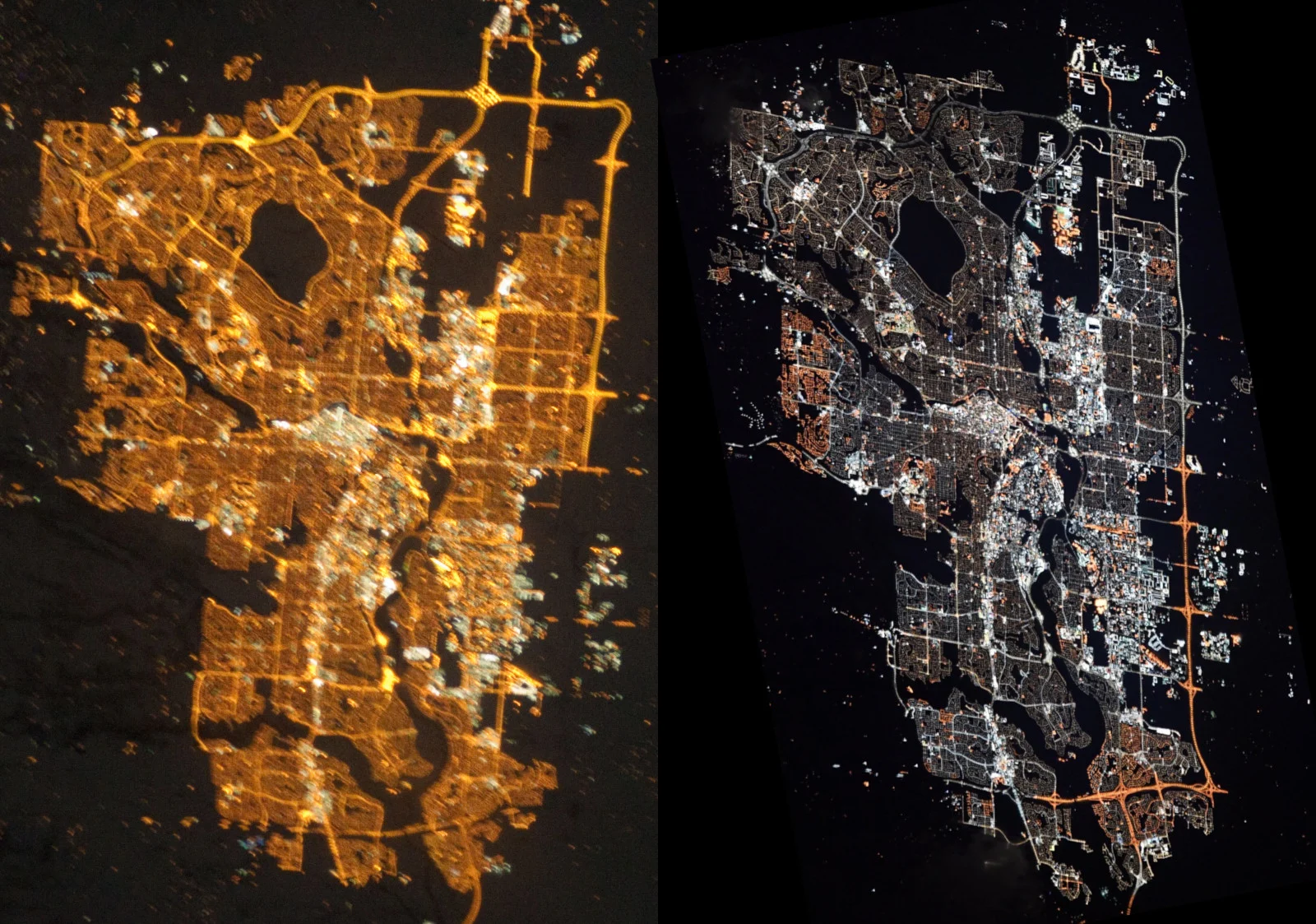
Stars are vanishing from human sight at an astonishing rate, says report
Urban light pollution is robbing us of our view of the cosmos.
Data from the citizen science program Globe at Night reveals that 'skyglow' has stolen away the night sky from billions of people worldwide, and the problem is far worse than we previously thought.
(Originally published on January 20, 2023, this article has been updated for International Dark Sky Week 2023, which runs from April 15-22.)
Look up into the sky on a clear night. What do you see?
If you're in an area far from city light pollution, your eye will likely be able to pick out several thousand stars twinkling above. Also, for much of the year, the vast core of our Milky Way galaxy will be stretched across the sky.

This image of the night sky captures The Milky Way from Lower Five Islands, Nova Scotia, on May 8, 2019. Although the view above shows a pristine view of the cosmos, hints of urban light pollution are visible along the horizon. Credit: Barry Burgess/UGC
The closer you get to the core of a large urban centre, though, the less of this grand spectacle you will see. Bright urban environments interfere with the human eye's ability to see in the dark, and without engaging the eye's more light-sensitive receptors, dimmer stars are lost from view.
Additionally, the night sky above cities literally appears to glow as the light emitted from urban sources is scattered back toward the ground by the air itself. This phenomenon is called 'skyglow', which washes out the night sky, hiding all but the brightest stars and planets from sight.
This problem is nothing new. The impacts of city lights on the night sky have been observed for some time. According to experts, over two billion people (around 30 per cent the world's population) have been robbed of their view of the night sky. In the United States, roughly 80 per cent of the population cannot see the Milky Way from their homes. Also, light pollution is getting worse as urban centres expand, with satellite observations revealing a roughly 2 per cent increase in light pollution per year.
However, the results of a new study published this week in the journal Science show that the stars are disappearing from our view at a rate even faster than we thought.
"The rate at which stars are becoming invisible to people in urban environments is dramatic," Christopher Kyba, the lead author of the study from the German Research Centre for Geosciences said in a press release.
"If the development were to continue at that rate, a child born in a place where 250 stars are visible will only be able to see 100 stars there on his 18th birthday," Kyba explained.

This infographic reveals the impact of urban light pollution on the night sky by showing what is typically visible from Dark Sky sites on the left, and transitioning to denser and denser urban environments towards the right. Credit: NOIRLab/NSF/AURA, P. Marenfeld
Kyba, along with colleagues at the GFZ German Research Centre for Geosciences and the National Optical-Infrared Astronomy Research Laboratory (NOIRLab), examined over 50,000 reports submitted by citizen scientists around the world to the Globe at Night project. Their results show that, from 2011 to 2022, skyglow increased by about 6.5 per cent per year across Europe and by around 10.4 per cent per year in North America.
Averaged across the entire world, the rate of increase comes out to around 9.6 per cent per year. That's nearly five times greater than the rate observed by satellites!
"This shows that existing satellites aren't sufficient to study how Earth's night is changing," Kyba said in a NOIRLab statement. "We've developed a way to 'translate' Globe at Night observations of star visibility made at different locations from year to year into continent-wide trends of sky brightness change. That shows that Globe at Night isn't just an interesting outreach activity, it's an essential measurement of one of Earth's environmental variables."
Kyba believes the higher rates of increase found from human observations are likely due to two factors, the GFZ press release said. First, satellite observations record light that is emitted more or less straight up, but the increase in urban light pollution is due mainly to sources that shine horizontally, such as from building windows and electronic billboards.
Second, cities have been switching from orange sodium vapour lamps to white LEDs that emit more light in the blue end of the spectrum. Blue light has more of an impact on human night-vision and is scattered more by the atmosphere, thus contributing more to skyglow. However, satellites that observe the whole Earth at night are not typically sensitive to those blue wavelengths of light.

These two images of Calgary, from Dec. 24, 2010, on the left and Jan. 6, 2020, on the right, show how much the city's lighting has changed over the past decade. The orange sodium vapour lamps used in 2010 have been largely replaced by white LED lights in 2020. Credits: left - NASA (eol.jsc.nasa.gov), right - Jessica Meir, NASA
According to NOIRLab: Light pollution is a familiar problem that has many detrimental effects, not only on the practice of astronomy. It also has an impact on human health and wildlife, since it disrupts the cyclical transition from sunlight to starlight that biological systems have evolved alongside. Furthermore, the loss of visible stars is a poignant loss of human cultural heritage. Until relatively recently, humans throughout history had an impressive view of the starry night sky, and the effect of this nightly spectacle is evident in ancient cultures, from the myths it inspired to the structures that were built in alignment with celestial bodies.
"The increase in skyglow over the past decade underscores the importance of redoubling our efforts and developing new strategies to protect dark skies," said Dr. Connie Walker, a co-author of the study who developed the Globe at Night program at NOIRLab. "The Globe at Night dataset is indispensable in our ongoing evaluation of changes in skyglow, and we encourage everyone who can to get involved to help protect the starry night sky."
International Dark Sky Week
From April 15 to 22, 2023, astronomers, skywatchers, and night-sky enthusiasts around the world are observing International Dark Sky Week.
Taking place each year during the week of April's New Moon, International Dark Sky Week is a time for people to reconnect with the night sky, to become more aware of the impacts of light pollution, not only to the night sky but also on our health and on the well-being of wildlife, and to reduce the problem by taking action.
According to the International Dark Sky Association, there are several ways that we can act on this issue:
become a citizen scientist, by observing the night sky and reporting on what you see (or perhaps more specifically what you don't see) to the Globe At Night site.
assess the lighting around where you live, and if possible, change out inefficient or overly-bright light sources for more dark-sky friendly choices (which can also end up saving you money in the long run!).
advocate for these kinds of changes in your neighborhood and community, as well as with friends and relatives.
To experience the awe and wonder that comes from gazing out into the universe without your view being blocked by light pollution, the Royal Astronomical Society of Canada lists over 30 Dark-Sky Sites across the country.
Most are Dark Sky Preserves and Nocturnal Preserves, where artificial lighting is very limited, making them some of the most ideal places to observe the night sky. They also include a few Urban Star Parks, where lighting is strictly controlled in an urban environment to reduce the effects of light pollution.











